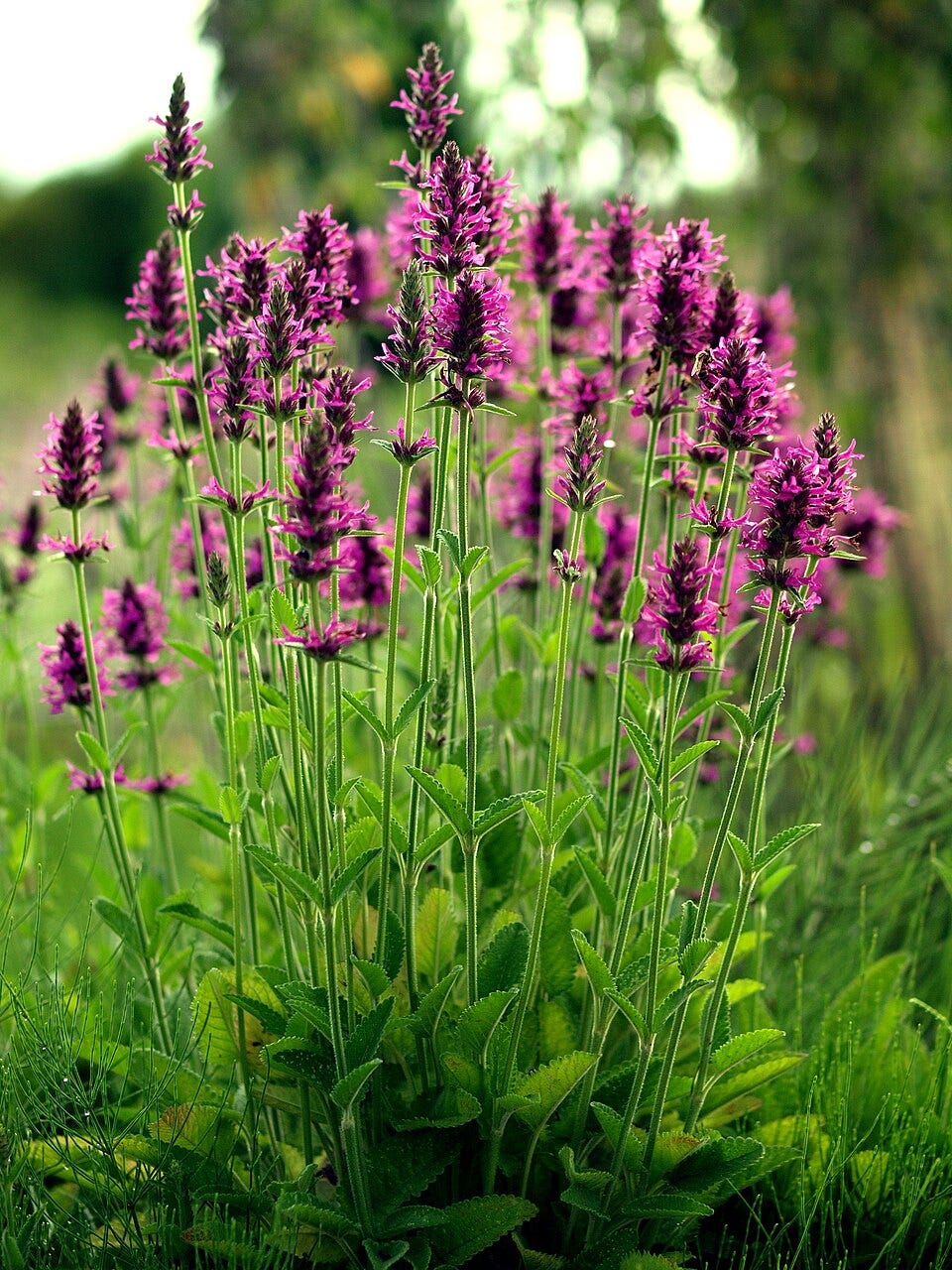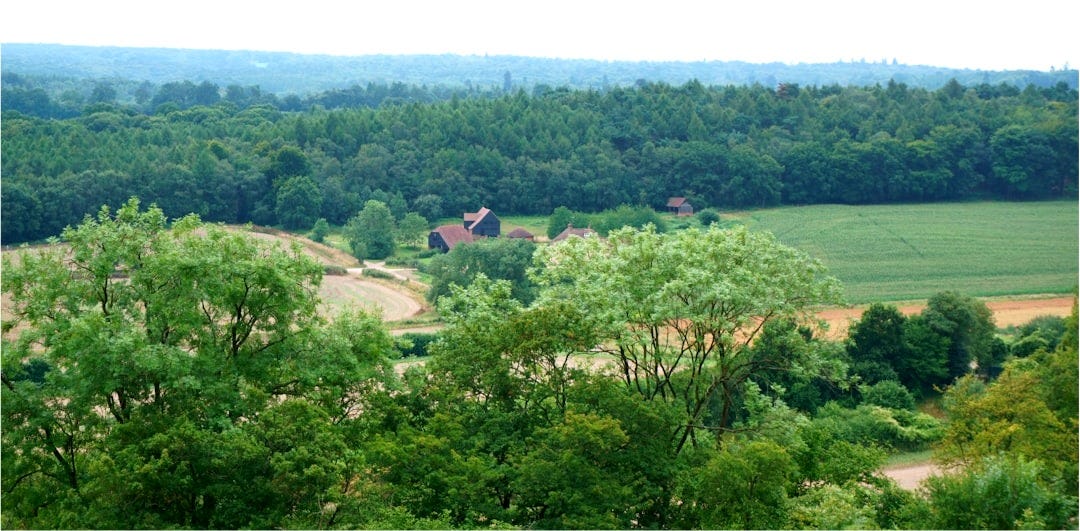Native Ornamental Plant Guide for Southern England
A selection of woodland plants that are native to the UK and suitable for home gardens in London, the Home Counties and the Southern Coast.
I recently relocated from Southern California (SoCal) to Surrey, England. In SoCal, we specialised in drought-tolerant plants with an emphasis on California Natives. I aim to do the same in England, except this time with an emphasis on English Native Plants.

For an example of what I mean: Ceanothus is a beautiful plant that grows well in the UK, and whenever I see it on a street in London, I hate it. I hate it because it doesn’t let me know I am in London. I want to feel like I am in London, a city in the British Isles, not North America.
British Native Plant Movement
Unlike SoCal, the U.K. native plant movement seems less known, but not unknown, amongst keen gardeners.
Homeowners I meet have asked for plant palettes that give a better sense of place, eschewing the generic plant mixes in a typical Chelsea Flower Garden. To these homeowners, they are pleased to learn that not only is there a great history of native plants for their location, but many are able to grow into a beautiful garden without any additional watering.

Surrey sits in the Thames Basin, an area that covers most of London, including its suburbs and satellite cities. The Thames Basin is named after the famous River Thames that runs past the Houses of Parliament in Westminster.

The Thames Basin has been identified as one of 7 regions in the UK that will have severe water stress by 2030. By 2040, the hoses could literally run dry, and gardeners will be prohibited from watering their gardens.
“Seven regions in England will face severe water stress by 2030 as Brits significantly underestimate their daily water usage”
The use of native and climate-friendly plants will help offset this risk. A secondary benefit is that gardens in Surrey, when planted with native plants, will look like they belong in Surrey and support local wildlife.

Woodland Plant Palette
A simple way to design a garden using native plants is to look at local wild areas, such as woodlands. Here is a sample of woodland plants that can work well in a home garden.
General Ornamental Mix
Common primrose, Primula vulgaris: Low-growing perennial with pale primrose-yellow flowers.
Pairs with Wood anemone and Bluebell.
Harebell, Campanula rotundifolia: Delicate blue-violet bells on slender stems.
Pairs withYarrow and Oxeye daisy.
Common foxglove, Digitalis purpurea: Tall spires with purple-pink tubular flowers.
Pairs with Wood cranesbill and Oxlip.
Oxeye daisy, Leucanthemum vulgare: Classic daisies bring brightness to meadows.
Pairs with Knapweed and Field scabious.
Common columbine, Aquilegia vulgaris: Graceful nodding flowers bridging spring and summer.
Pairs with Foxglove and Meadow cranesbill.

Garden-Ready Natives
Meadow cranesbill, Geranium pratense: Vivid blue-violet flowers, long-blooming.
Pairs with Yarrow.
Small scabious, Scabiosa columbaria: Sky-blue pincushion flowers.
Pairs with Betony and Red fescue.
Betony, Stachys officinalis: Rose-purple flowering spikes.
Pairs with Field scabious and Oxeye daisy.
Wild marjoram, Origanum vulgare: Aromatic with warm pink-purple tones.
Pairs with Yarrow and Wild thyme.
Common knapweed, Centaurea nigra: Bold purple flowers with excellent texture.
Pairs with Oxeye daisy and Hoary plantain.

Habitat-Specific Palettes
The following plant lists are for specific habitats in a garden. Habitats are what I would have called microclimates, or Hydrozones, in California.
Dry/Sunny Sites
Wild marjoram, Origanum vulgare
Viper’s bugloss Echium vulgare
Rock rose Helianthemum nummularium
Wild thyme, Thymus polytrichus
Yarrow, Achillea millefolium

Shade/Woodland Edge
Common foxglove, Digitalis purpurea
Common primrose, Primula vulgaris
Wood anemone, Anemone nemorosa
Native bluebell, Hyacinthoides non-scripta
Male fern, Dryopteris filix-mas
Meadow
Oxeye daisy, Leucanthemum vulgare
Field scabious, Knautia arvensis
Common knapweed, Centaurea nigra
Small scabious, Scabiosa columbaria
Bird’s-foot trefoil, Lotus corniculatus

Damp/Wet Conditions
Meadowsweet, Filipendula ulmaria
Purple loosestrife, Lythrum salicaria
Marsh marigold, Caltha palustris
Yellow flag iris, Iris pseudacorus)
Water mint, Mentha aquatica

Palettes listed by Plant Type
Sometimes, it can be useful to create plant lists grouped by a plant type. Here are some suitable British woodland plants, grouped by plant type:
Trees & Large Shrubs
Hawthorn, Crataegus monogyna
Hazel, Corylus avellana
Holly, Ilex aquifolium
Guelder rose, Viburnum opulus
Dogwood, Cornus sanguinea

Perennials
Meadow cranesbill, Geranium pratense
Common columbine, Aquilegia vulgaris
Betony, Stachys officinalis
Common primrose, Primula vulgaris
Yarrow, Achillea millefolium
Grasses & Ferns
Tufted hair grass, Deschampsia cespitosa
Red fescue, Festuca rubra
Male fern, Dryopteris filix-mas
Climbing Plants
Honeysuckle, Lonicera periclymenum
Field rose, Rosa arvensis
Ivy, Hedera helix

Southern England’s native flora has a lot to offer. I am totally stoked to get working with them.
One of my colleagues (Kevin) is quite a poet. Kevin says this about UK natives plants :
“muted, textural, and harmoniously seasonal. These plants work not only as ecological restorers but as powerful design tools when used in a home garden”.
The key to getting this right is the contrast of form (e.g., fern vs. grass, spire vs. mat) and tone layering (e.g., cool lavender next to warm straw, or mossy greens next to chalky whites).

https://www.kingfisher.com/media/news/2023/seven-regions-in-england-will-face-severe-water-stress-by-2030-aSouthern England’s native flora offers subtle beauty — muted, textural, and harmoniously seasonal. These plants work not only as ecological restorers but as powerful design tools when handled with a painterly eye. The trick lies in contrast of form (fern vs. grass, spire vs. mat) and tone layering (cool lavender beside warm straw-gold, mossy greens against chalky whites).


